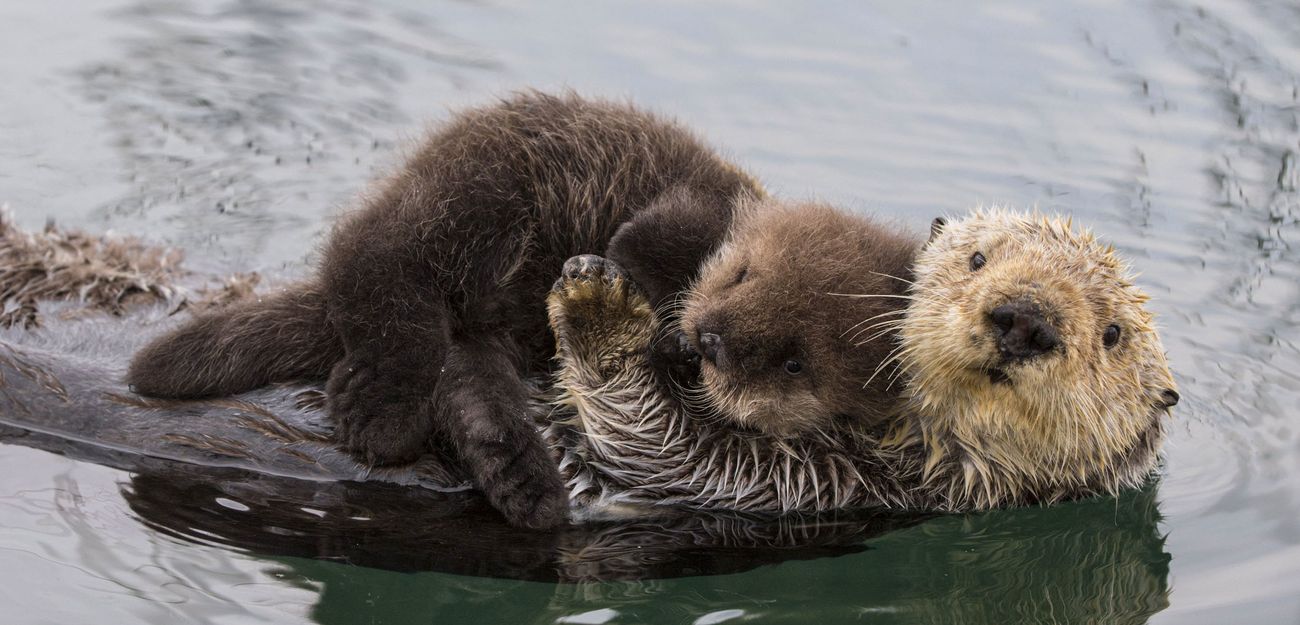
Did you know that sea otters hold hands while sleeping to avoid drifting apart? These adorable marine mammals, known for their playful behavior, have many fascinating traits. Sea otters are not just cute; they play a crucial role in maintaining the health of kelp forests by controlling sea urchin populations. Found along the coasts of the northern and eastern North Pacific Ocean, these creatures have the densest fur of any animal, which helps them stay warm in chilly waters. They use tools like rocks to crack open shellfish, showcasing their impressive intelligence. Dive into these 31 amazing facts about sea otters and discover why they are such a vital part of their ecosystem.
Sea Otters: Nature's Adorable Marine Mammals
Sea otters are fascinating creatures that captivate many with their playful behavior and unique characteristics. Let's dive into some intriguing facts about these marine mammals.
- Sea otters belong to the weasel family, making them the largest members of the Mustelidae family.
- Unlike most marine mammals, sea otters lack a layer of blubber. Instead, they rely on their dense fur for insulation.
- Their fur is the densest of any animal, with up to one million hairs per square inch.
- Sea otters are native to the coasts of the northern and eastern North Pacific Ocean.
- They are known for their use of tools, often using rocks to crack open shellfish.
Unique Behaviors and Adaptations
Sea otters exhibit a range of unique behaviors and adaptations that help them survive in their aquatic environment.
- They can hold their breath for up to five minutes while diving for food.
- Sea otters have a loose pouch of skin under each forearm where they store food and tools.
- They often wrap themselves in kelp to keep from drifting away while resting.
- Sea otters are known to float on their backs while eating, using their chest as a table.
- They have powerful jaws and sharp teeth to break open hard shells.
Social Structure and Communication
Sea otters have complex social structures and communication methods that play a crucial role in their daily lives.
- They live in groups called rafts, which can consist of a few individuals to several hundred.
- Rafts are often segregated by gender, with males and females forming separate groups.
- Sea otters communicate through vocalizations, body language, and scent marking.
- They groom each other to maintain their fur's insulating properties and strengthen social bonds.
- Mother otters are highly attentive, carrying their pups on their chests while swimming.
Diet and Hunting Techniques
Sea otters have a varied diet and employ interesting hunting techniques to secure their meals.
- Their diet includes sea urchins, crabs, clams, snails, and small fish.
- Sea otters play a crucial role in maintaining the balance of kelp forest ecosystems by preying on sea urchins.
- They use their sensitive whiskers to detect prey in murky waters.
- Sea otters can consume up to 25% of their body weight in food each day.
- They are known to stash food in their armpit pouches for later consumption.
Conservation and Threats
Despite their playful nature, sea otters face numerous threats that impact their survival.
- Historically, sea otters were hunted extensively for their fur, leading to a significant decline in their population.
- Conservation efforts have helped their numbers rebound in some areas, but they remain endangered.
- Oil spills pose a significant threat to sea otters, as oil can damage their fur's insulating properties.
- They are also vulnerable to diseases, such as toxoplasmosis and distemper.
- Climate change and habitat loss continue to impact sea otter populations.
Fun and Lesser-Known Facts
Here are some fun and lesser-known facts about sea otters that highlight their unique charm.
- Sea otters have retractable claws, similar to those of cats.
- They have a high metabolic rate to generate body heat, which requires them to eat frequently.
- Sea otters can live up to 20 years in the wild.
- They have been observed playing with objects like shells and stones, showcasing their playful nature.
- Sea otters have a unique way of sleeping, often holding hands with each other to stay together.
- They are one of the few animals known to use tools, a trait shared with primates and some bird species.
The Final Splash
Sea otters are more than just adorable creatures floating on their backs. They play a crucial role in maintaining the health of kelp forests by keeping sea urchin populations in check. Their dense fur, the thickest of any animal, keeps them warm in chilly waters. These social animals often hold hands to stay together while sleeping, forming "rafts" that can include dozens of otters.
Their use of tools, like rocks to crack open shellfish, showcases their intelligence. Despite their playful nature, sea otters face threats from oil spills, pollution, and habitat loss. Conservation efforts are vital to ensure their survival.
Understanding these fascinating creatures helps us appreciate the delicate balance of marine ecosystems. Next time you see a sea otter, remember the incredible facts that make them unique and important to our oceans.
Was this page helpful?
Our commitment to delivering trustworthy and engaging content is at the heart of what we do. Each fact on our site is contributed by real users like you, bringing a wealth of diverse insights and information. To ensure the highest standards of accuracy and reliability, our dedicated editors meticulously review each submission. This process guarantees that the facts we share are not only fascinating but also credible. Trust in our commitment to quality and authenticity as you explore and learn with us.
